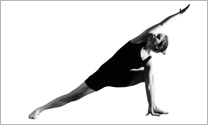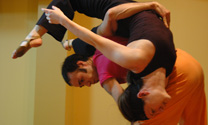More than 550 culture and art representatives from 57 countries participated in the meeting of IETM, which was held in Zurich between 6-9 November 2008. The theme of the 4-day meeting, organized with the contributions of Swiss Arts Council Pro Helvetia, the Canton and City of Zurich, the Zurich University of the Arts -as well as the Theaterhaus Gessnerallee, was “Misunderstanding”. Pointing out to the potential of misundertandings to pave the way for communication and consensus, the main aim of the speakers was to focus on the practices that facilitate and foster communication.
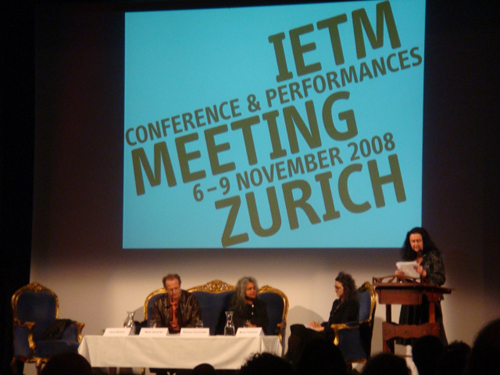
As noted by Pius Knüsel, the director of the Swiss Arts Council Pro Helvetia, “Understanding is a cultural process, with terms and expressions rooted deep in the most diverse fundaments of our regional and national identities. We are well aware of how much misunderstandings are inevitably a part of public discussion. They cannot be eradicated; on the contrary, they should be used as stimuli for discussion, as a platform for tolerance and as an impulse for artistic work. Artists are well known for being specialists in misunderstandings. They cultivate ambiguity whereby understanding and misunderstanding appear as inseparable twin.”
During the meeting, the limits of intercultural dialogue were questioned and information was provided on programs that support transnational mobility and cooperation of artists. Zurich Mayor, having delivered a speech at the opening ceremony, noted that they viewed all the country representatives participating in the meeting as cultural ambassadors of Switzerland and saw the meeting as an important opportunity to show the abundant characteristics of their city.
In scope of the meeting, various sessions and panel discussions were held and the participators have found the chance to share their experiences, learn about existing problems and challenges and propose solutions at the working groups and brainstorm sessions. A video shot by a young Iranian artist was also presented during the meeting. This short movie starting with the phrase “As I leave my country”, showed images of an artist walking by dancing in the streets, which carried a higher meaning as the artist was Iranian. This might have proposed an answer to one of the questions discussed during the panels, “Do the artists represent themselves or their country?”.
Although artists definitely have a universal claim in their creations and get inspiration both from human and the world as a whole at the creation stage, the first thing recognized about them when looked from outside is their country. Even though artists express and reflect themselves when creating their products, they become a representative of their country as they present it. In fact, the European approach that views independent artists as cultural ambassadors is based on this idea. Each artist approaches the other’s culture and productions with curiosity and interest. Being able to “understand” even when watching a theater play in an unknown language, reflects the narrow boundaries of the differences among us.

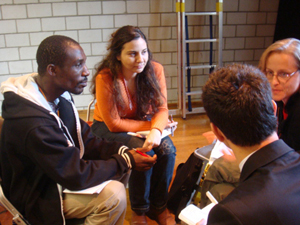
IETM meetings are full of inspiration from beginning to the end, which is a basic nutrient for artists. They act as a great opportunity to travel and get to know a country you have never seen before and to listen to their targets and problems from representatives of arts. This is what makes international art meetings a heaven of ideas for culture managers, where you can discuss your methods, evaluate cooperation opportunities and get informed about new trends.
It is quite comfortable to know that there are ones, “who think for you”, which the artists in Turkey is not much familiar with. The only thing to do is “express”. This may sound easy, but turns into a trouble in countries with high bureaucracy such as our country. To express is the first and most important step to claim your rights in Europe, the “heaven of ideas”. The idea that you have expressed and conveyed magically finds its place within a short time, and some things start to change...
Switzerland – City of Coffee, Chocolate and Towers
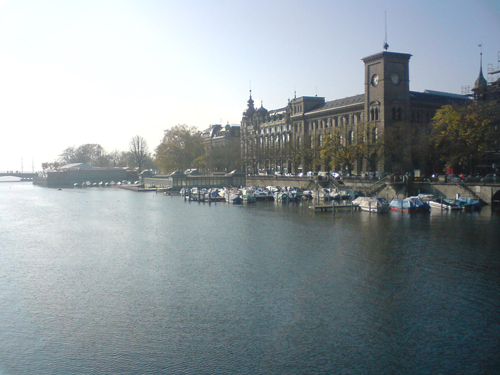
In Switzerland, you feel as if you can live only with coffee and chocolate for the rest of your life. Coffee smells coming from everywhere and the glitters of the shiny papers covering the chocolates attracts you. As you walk around in Zurich, large streets extending next to the riverside, elegant towers and high, historic buildings, in which many rich families and celebrities have lived during the last centuries draws your attention. The most common misunderstanding in this country is, as they say, the frequent confusion of Switzerland with Sweden. These countries, which are not event neighbours, do not have a very close relation, but everyone expects them to attend to eachother. Here, the fearsome, gigantic and magnificient churches seen throughout the Europe are replaced by sympathic and friendly ones. Its clock towers, bridges and theater buildings adorned with sculptures are among the musts of a European city.
We see high respect and a feeling of protection for time, which is our most valuable asset.
The thing that gives value to time is the existence of arts. First respecting to one’s self and valuing of human time and effort as a result of the distinguishing effect of human thought.
The foundations of economy also lie in these ideas. When we buy a bag or a necklace in our country, we compare the quality of fabric with price. On the other hand, in the West handwork is valuable. As we view the human and society from an artistic angle, we can build a humanistic society full of value and love. If we take into account the Time as we ask ourselves what is meaningful, we can cope with. We can find out how deeply our lives and relations are affected by invisible things.
Switzerland is the homeplace of Dadaism. In the trip we madea trip to the center of this artistic movement during the meeting, we have found the change to see some drawings and artworks. Dadaism is still alive with the movements it has effected and inspired such as surrealism; and with its protest stand, it always makes arts straightened up even in times when it turns upside down.
Countdown to 2010...
IETM, having organized a large gathering in Istanbul in year 2006, stated that they may consider visiting Istanbul once again in 2010, the year in which Istanbul will be the European Capital of Culture, in order to see the progress achieved in the artistic front and the solutions having been developed.
Taken into account that the high number of performing arts festivals organized each year in the countries, which are young members of the EU, we must also point out to the progress that Turkey has to make. When talking about festivals, we also consider the need for festivals, which “seeks and produces the new” and presents new works and cooperations, in addition to big events. Why is this so difficult? For that we have no artists with sufficient education? Absolutely not. Due to absence of independent art groups presenting their productions worldwide? Certainly not. Or due to the small number of creative teams, curators, volunteers, artlovers or audience? The answer is again no. In fact, we have to make more efforts in establishing a healthy coordination between the state, private sector and art institutions; and the deficiency bureucratic structures in today’s communication age, in which even the international markets are managed with a single click.
On the other hand, we also have numerous advantages. 2008 was the year of Intercultural Dialogue. And in 2010, Istanbul will be the European Capital of Culture. Cultural exchange as well as Turkey, as a candidate state, is becoming a center of attention.
As we approach 2010s, the great power of change has started to boost the humanity. By seeking always the new, the artists and intellectuals strive not to be caught in the current of pragmatism or reactionism. Independent arts is carefully chasing the single fragments of meaning in face of the bombardment of audio-visual media and the information society; and is running after inspiration to save human from his aloneness and to “appreciate” him again.
As the collaborations in the field of culture and identity unite the small islands with the universe, the artists are knocking the doors of joint productions and cooperation by going beyond the differences such as language and nationality.
Ilkay Sevgi / Simya SANAT, November 2008








